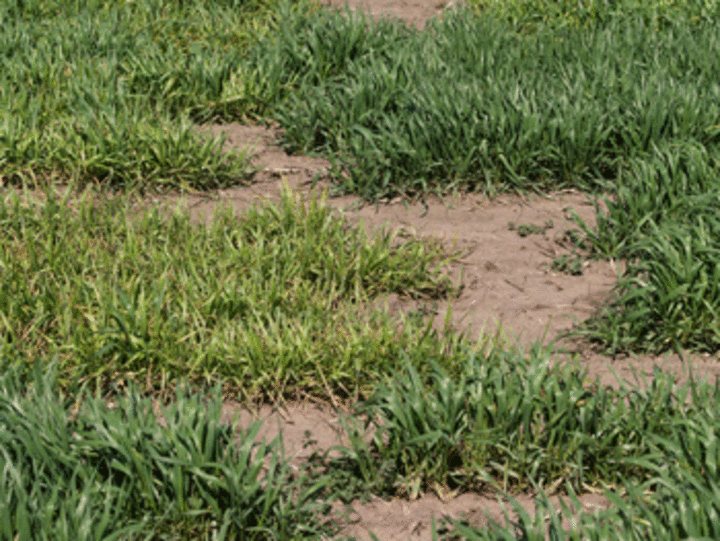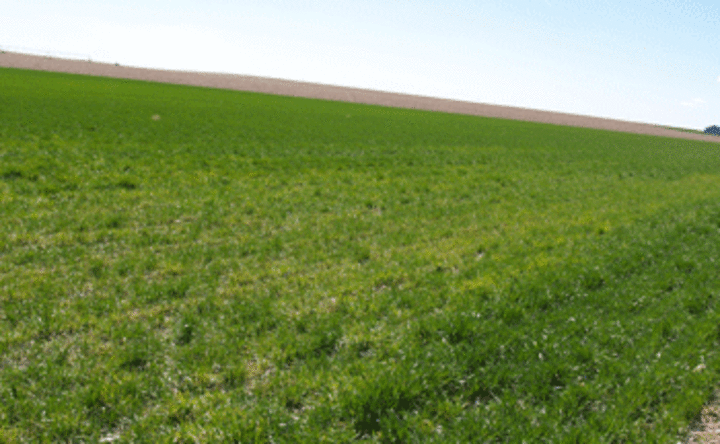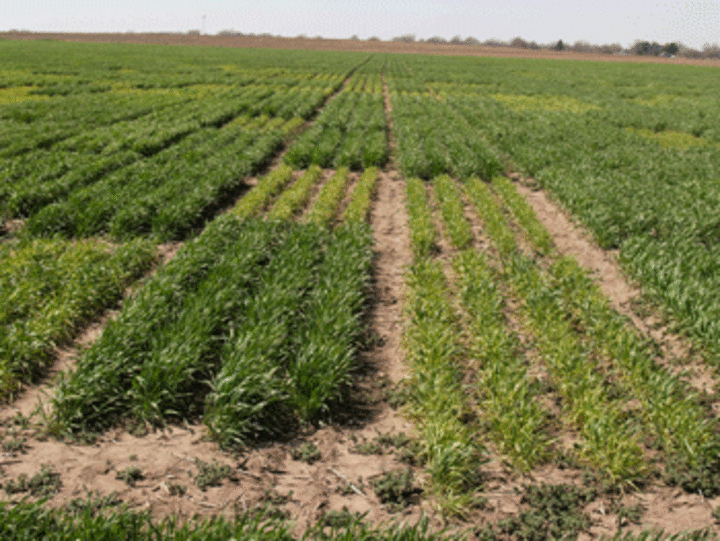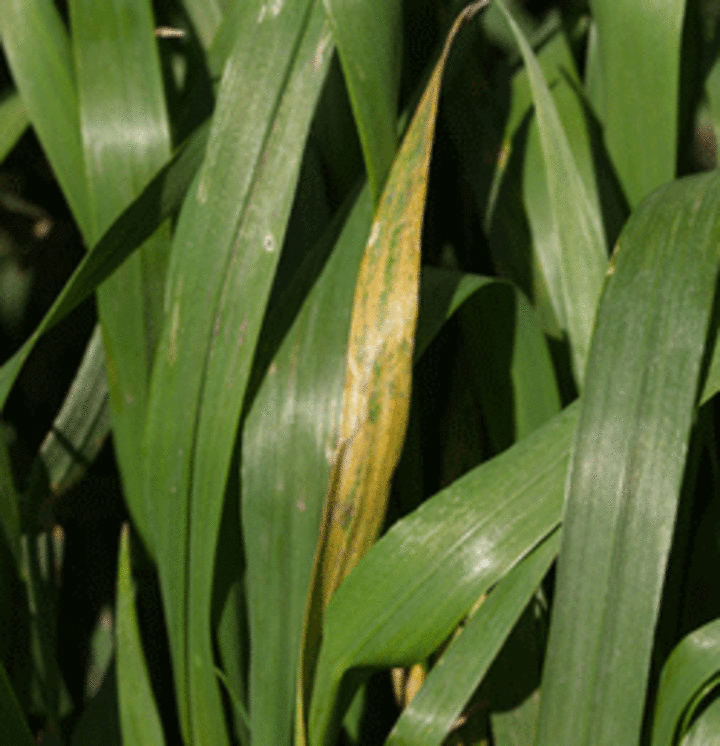April 10, 2009

|
|
Figure 2. Stunting (center plot) of a wheat breeding line caused by soilborne wheat mosaic virus. |

|
| Figure 3. Field symptoms of soilborne wheat mosaic localized along a low-lying area.
|

|
| Figure 4. A wheat breeding nursery showing differences among lines in susceptibility to soilborne wheat mosaic virus. Susceptible lines appear yellow and stunted.
|
Wheat samples submitted to the Plant and Pest Diagnostic Clinic within the last two weeks have tested positive for soilborne wheat mosaic virus. The samples were from Clay, Gage, Lancaster, and Webster counties.

|
| Figure 1. A wheat leaf showing a yellowish-green mosaic caused by soilborne wheat mosaic virus. |
Symptoms of soilborne wheat mosaic range from mild green to conspicuous yellow leaf mosaics (Figure 1). Stunting (Figure 2) also occurs and can vary from moderate to severe depending on the level of cultivar susceptibility. Symptoms are most prominent on early spring growth.
The virus mainly infects winter wheat, but spring wheat also can be infected. In winter wheat, infections that occur in the fall during cool, wet periods cause the most serious damage.
Favorable Conditions
Soilborne wheat mosaic is favored by wet soils and a temperature range of 50°F to 68°F with an optimum temperature of 61°F. The disease does not progress further and symptoms are mild at temperatures above 68°F.
The virus survives in soil in association with resting spores of the root-infecting fungus Polymyxa graminis. This fungus preferentially inhabits low-lying wet areas. Therefore, field symptoms may be uniform but more often are localized along waterways, low, wet areas (Figure 3) or around old building sites. The resting spores of the fungus germinate by forming zoospores which swim in wet soil and infect root hairs, transmitting the virus in the process.
Management
Planting resistant cultivars is the most effective management strategy for soilborne wheat mosaic. Breeding lines and cultivars vary widely in their susceptibility to the virus (Figure 4), resulting in yield losses up to 20%. Rarely, total yield loss can occur in highly susceptible cultivars.
Avoiding early planting also can help reduce damage.
Stephen Wegulo, Extension Plant Pathologist
Amy Ziems, Extension Educator and Diagnostician
Paul Hay, Extension Educator
Jennifer Rees, Extension Educator
